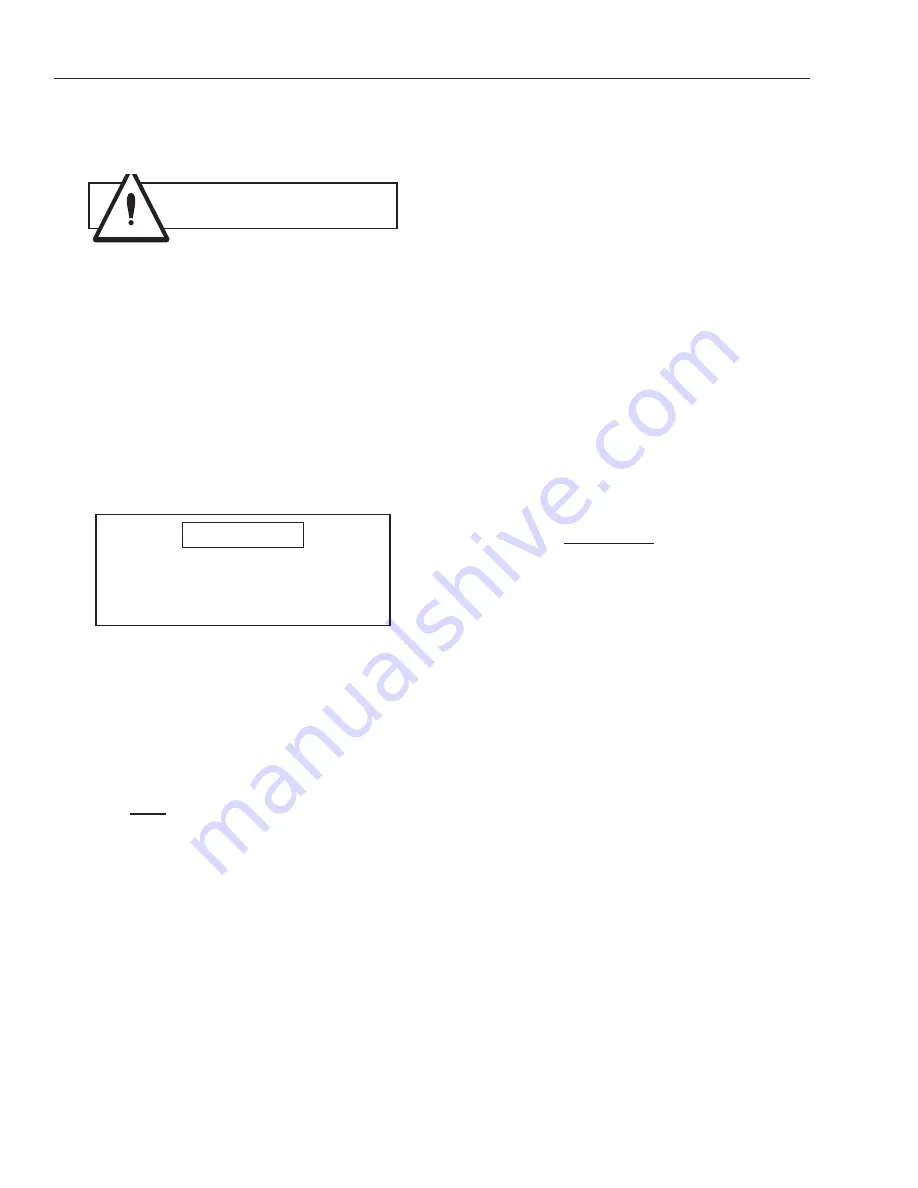
IM-H
U.S. & Canada 1-800-922-1919 • Mexico 1-800-890-2900 • www.hussmann.com
12
M
aIntEnancE
GENERAL
The Hatco surface warmers are designed for maximum
durability and performance with minimum maintenance.
ELECTRIC SHOCK HAZARD:
Turn the power switch OFF, unplug the power
cord, and allow the unit to cool before
performing any maintenance or cleaning.
DO NOT submerge or saturate with water.
Unit is not waterproof. Do not operate if unit
has been submerged or saturated with water.
•
•
WARNING
GENERAL CLEANING DIRECTIONS
To preserve the finish of the Hatco surface warmer, it
is recommended that the surfaces
BE CLEANED A
MINIMUM OF ONCE A DAY -
or per your company
recommdations -which is typically more often than once
a day.
Use non-abrasive cleaners only. Abrasive
cleaners could scratch the finish of the unit,
marring its appearance and making it
susceptible to soil accumulation.
NOTICE
CLEANING INSTRUCTIONS
1 . Turn temperature control knobs to
OFF
position.
2.
ALLOW SURFACES TO COOL BEFORE
HANDLING
.
3. Using a soft cloth, clean with a
non-abrasive, food
zone
safe cleaner. A mixture of 50% water and 50%
white vinegar is reccomended. Do not use flavored
vinegar.
5. Difficult to reach areas should be cleaned with a
small nylon brush and vinegar/water mixture.
4. ALWAYS Rinse with clean water and immediately
dry after cleaning.
5. Clean frequently and regularly.
6. Remove surface spills immediately with a damp
cloth.
STAINLESS STEEL CLEANING AND CARE
There are three basic things which can break down your
stainless steel’s passivity layer and allow corrosion.
AVOID the following:
1. Mechanical Abrasion
Mechanical abrasion means those things that
will scratch the steel’s surface. Steel pads, wire
brushes, abrassive cleaners, and scrapers are prime
examples.
5. Maintenance
2. Water
Water comes out of our tap in varying degrees of
hardness. Depending on what part of the country
you live in, you may have hard or soft water. Hard
water may leave spots. Also, when heated, hard
water leaves deposits behind that if left to sit,
will break down the passive layer and rust your
stainless steel. Never leave water on stainless
steel surfaces.
Other deposits from food preparation and service
must be properly removed.
3. Chlorides
Chlorides are found nearly everywhere. They
are in water, food and table salt. One of the
worst perpetrators of chlorides can come from
household and industrial cleaners.
Don’t Despair! Here are a few steps that can help
prevent stainless steel rust.
1. Use the Proper Tools
When cleaning your stainless steel products, take
care to use non-abrasive tools. Soft clothes and
plastic scouring pads will NOT harm the steel’s
passive layer.
Again, we reccomend using a mixture of 50%
water and 50% white vinegar (do not use flavored
vinegar) and a soft cloth. Rinse with water and
immediately dry with soft cloth.
2. Clean With the Polish Lines
Some stainless steels come with visible polishing
lines or “grain”. When visible lines are present, you
should ALWAYS wipe in a motion that is parallel to
them. When the grain cannot be seen, play it safe
and use a soft cloth or plastic scouring pad.
3. Use Alkaline or Non-Chloride Cleaners
While many traditional cleaners are loaded
with chlorides, the industry is providing an ever
increasing choice of non-chloride cleaners. If you
are not sure of your cleaner’s chloride content,
contact your cleaner supplier. If they tell you that
your present cleaner contains chlorides, ask for
an alternative. Also, avoid cleaners containing
‘quaternary salts’ as they also can attack stainless
steel & cause pitting and rusting.
continued on next page....


































